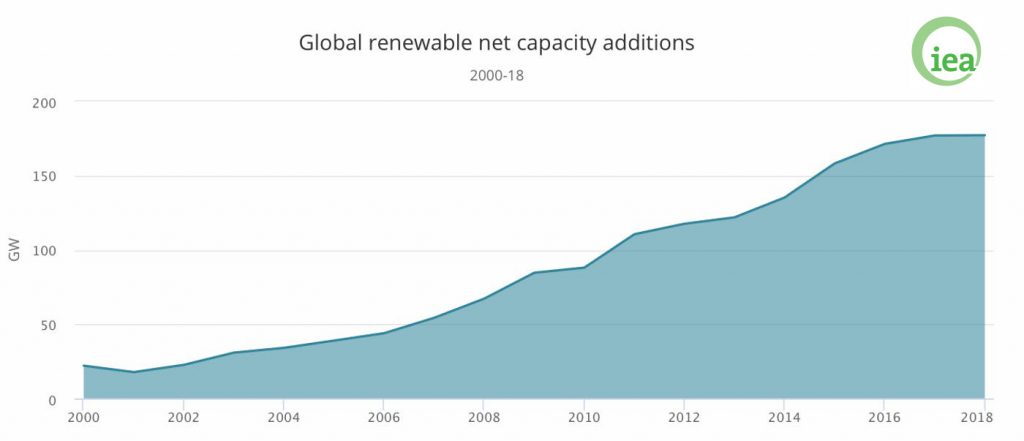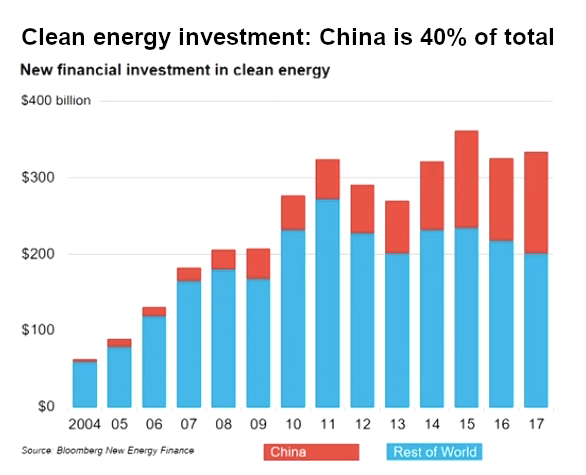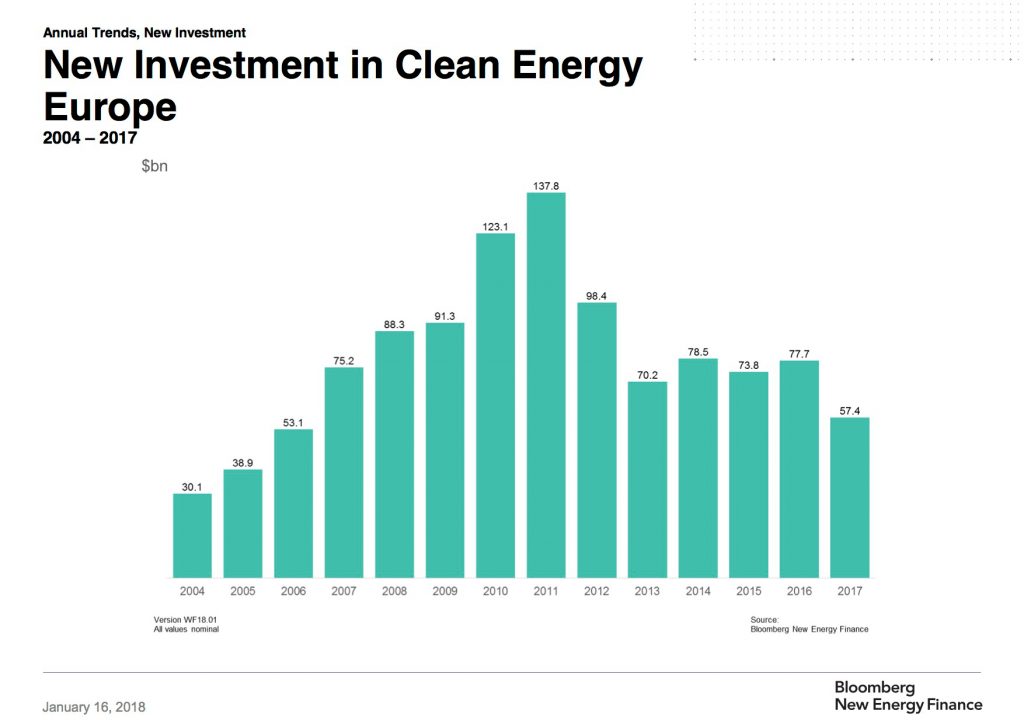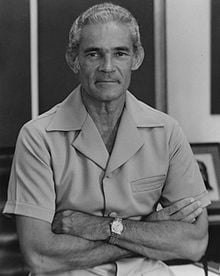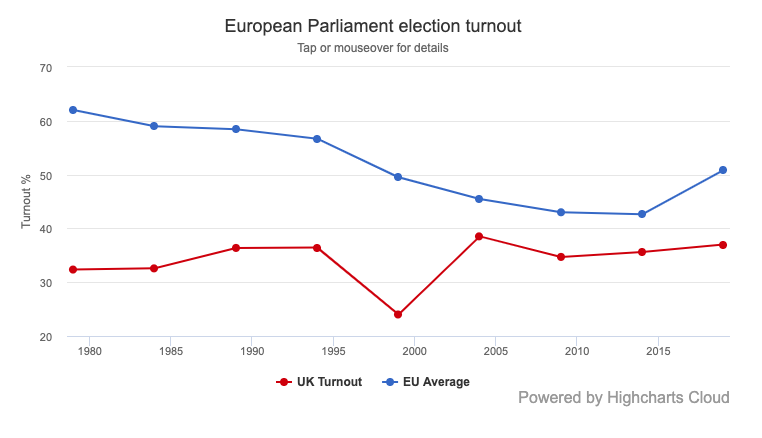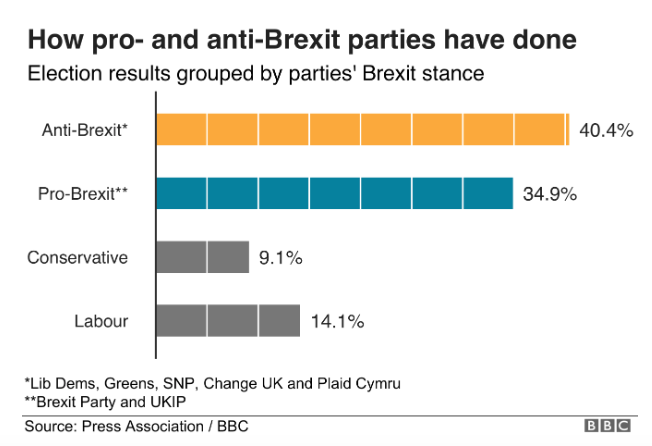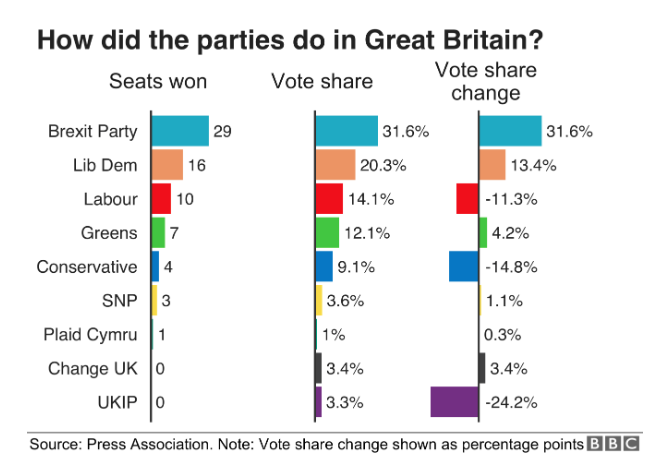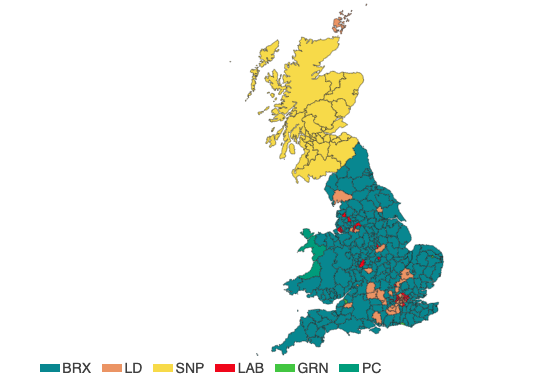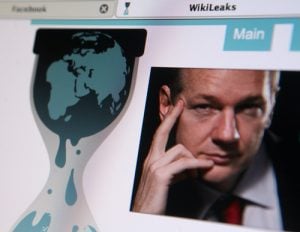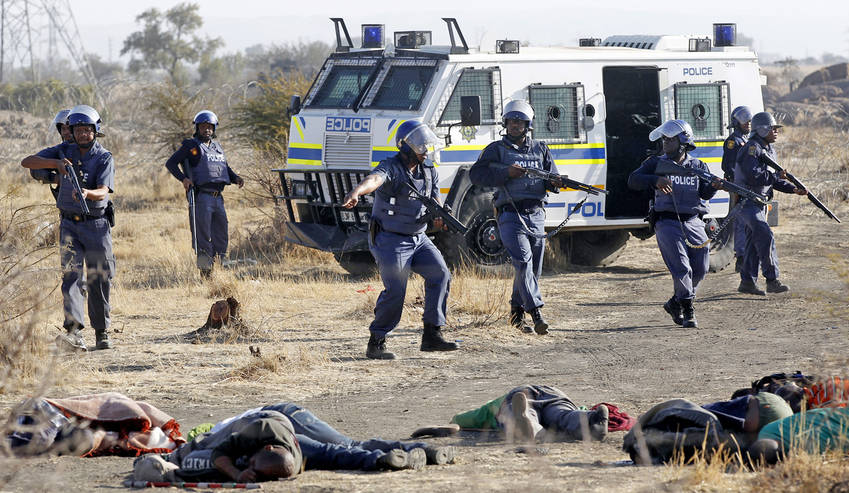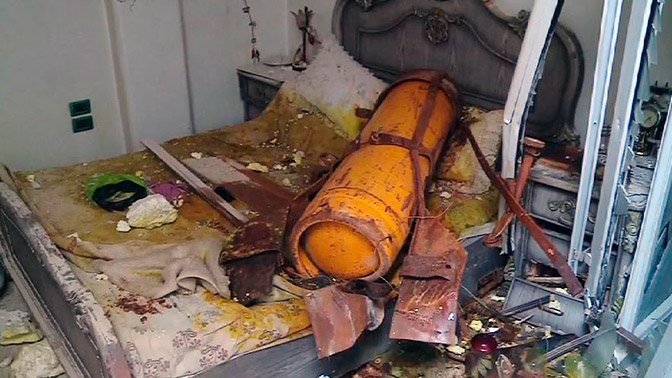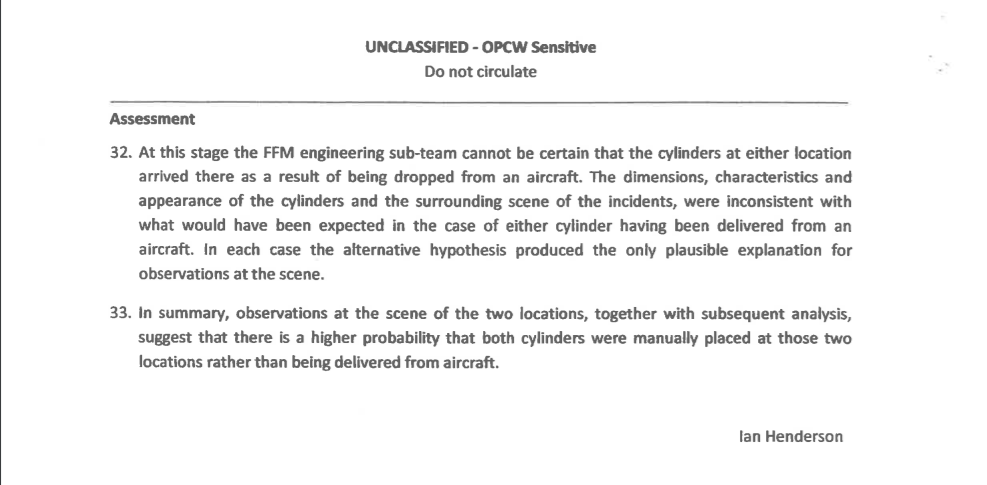Note to readers: please click the share buttons above
The Bilderberg Group will be meeting behind closed doors at the Hotel Montreux Palace, Montreux from the 30th of May to the 2nd of June, 2019.
Henry Kissinger, Jared Kushner, Jens Stoltenberg, Mark Carney (Governor of the Bank of England) among others will be attending. US Secretary of State Mike Pompeo will also be present.
The list of guests and personalities can be consulted on the Bildberg website. The names of many of the prominent personalities including Pompeo are not on the list.
The yearly Bilderberg talk-fest, which dates back to 1954, features a guest list of around 130 people from Europe and North America including everyone from royals to business tycoons and academics. … According to the official Bilderberg website, discussions are held under the Chatham House Rule, which means participants can use any information they receive during the meeting but cannot reveal its source. (Thelocal.ch)
The topics announced by the organizers for the 2019 Bilderberg meeting are:
1. A Stable Strategic Order
2. What Next for Europe?
3. Climate Change and Sustainability
4. China
5. Russia
6. The Future of Capitalism
7. Brexit
8. The Ethics of Artificial Intelligence
9. The Weaponisation of Social Media
10. The Importance of Space
11. Cyber Threats
***
The following review article by Stephen Lendman was originally published on Global Research in June 2009.
***
Daniel Estulin has investigated and researched the Bilderberg Group’s far-reaching influence on business and finance, global politics, war and peace, and control of the world’s resources and its money.
His book, “The True Story of the Bilderberg Group,” was published in 2005 and is now updated in a new 2009 edition. He states that in 1954, “the most powerful men in the world met for the first time” in Oosterbeek, Netherlands, “debated the future of the world,” and decided to meet annually in secret. They called themselves the Bilderberg Group with a membership representing a who’s who of world power elites, mostly from America, Canada, and Western Europe with familiar names like David Rockefeller, Henry Kissinger, Bill Clinton, Gordon Brown, Angela Merkel, Alan Greenspan, Ben Bernanke, Larry Summers, Tim Geithner, Lloyd Blankfein, George Soros, Donald Rumsfeld, Rupert Murdoch, other heads of state, influential senators, congressmen and parliamentarians, Pentagon and NATO brass, members of European royalty, selected media figures, and invited others – some quietly by some accounts like Barack Obama and many of his top officials.
Always well represented are top figures from the Council on Foreign Relations (CFR), IMF, World Bank, Trilateral Commission, EU, and powerful central bankers from the Federal Reserve, the ECB’s Jean-Claude Trichet, and Bank of England’s Mervyn King.
For over half a century, no agenda or discussion topics became public nor is any press coverage allowed. The few invited fourth estate attendees and their bosses are sworn to secrecy. Nonetheless, Estulin undertook “an investigative journey” that became his life’s work. He states:
“Slowly, one by one, I have penetrated the layers of secrecy surrounding the Bilderberg Group, but I could not have done this withot help of ‘conscientious objectors’ from inside, as well as outside, the Group’s membership.” As a result, he keeps their names confidential.
Whatever its early mission, the Group is now “a shadow world government….threaten(ing) to take away our right to direct our own destinies (by creating) a disturbing reality” very much harming the public’s welfare. In short, Bilderbergers want to supplant individual nation-state sovereignty with an all-powerful global government, corporate controlled, and check-mated by militarized enforcement.
“Imagine a private club where presidents, prime ministers, international bankers and generals rub shoulders, where gracious royal chaperones ensure everyone gets along, and where the people running the wars, markets, and Europe (and America) say what they never dare say in public.”
Early in its history, Bilderbergers decided “to create an ‘Aristocracy of purpose’ between Europe and the United States (to reach consensus to rule the world on matters of) policy, economics, and (overall) strategy.” NATO was essential for their plans – to ensure “perpetual war (and) nuclear blackmail” to be used as necessary. Then proceed to loot the planet, achieve fabulous wealth and power, and crush all challengers to keep it.
Along with military dominance, controlling the world’s money is crucial for with it comes absolute control as the powerful 19th century Rothschild family understood. As the patriarch Amschel Rothschild once said: “Give me control of a nation’s money and I care not who makes its laws.”
Bilderbergers comprise the world’s most exclusive club. No one buys their way in. Only the Group’s Steering Committee decides whom to invite, and in all cases participants are adherents to One World Order governance run by top power elites.
According to Steering Committee rules:
“the invited guests must come alone; no wives, girlfriends, husbands or boyfriends. Personal assistants (meaning security, bodyguards, CIA or other secret service protectors) cannot attend the conference and must eat in a separate hall. (Also) The guests are explicitly forbidden from giving interviews to journalists” or divulge anything that goes on in meetings.
Host governments provide overall security to keep away outsiders. One-third of attendees are political figures. The others are from industry, finance, academia, labor and communications.
Meeting procedure is by Chatham House Rules letting attendees freely express their views in a relaxed atmosphere knowing nothing said will be quoted or revealed to the public. Meetings “are always frank, but do not always conclude with consensus.”
Membership consists of annual attendees (around 80 of the world’s most powerful) and others only invited occasionally because of their knowledge or involvement in relevant topics. Those most valued are asked back, and some first-timers are chosen for their possible later usefulness.
Arkansas governor Bill Clinton, for example, who attended in 1991. “There, David Rockefeller told (him) why the North American Free Trade Agreement….was a Bilderberg priority and that the group needed him to support it. The next year, Clinton was elected president,” and on January 1, 1994 NAFTA took effect. Numerous other examples are similar, including who gets chosen for powerful government, military and other key positions.
Bilderberg Objectives
The Group’s grand design is for “a One World Government (World Company) with a single, global marketplace, policed by one world army, and financially regulated by one ‘World (Central) Bank’ using one global currency.” Their “wish list” includes:
— “one international identify (observing) one set of universal values;”
— centralized control of world populations by “mind control;” in other words, controlling world public opinion;
— a New World Order with no middle class, only “rulers and servants (serfs),” and, of course, no democracy;
— “a zero-growth society” without prosperity or progress, only greater wealth and power for the rulers;
— manufactured crises and perpetual wars;
— absolute control of education to program the public mind and train those chosen for various roles;
— “centralized control of all foreign and domestic policies;” one size fits all globally;
— using the UN as a de facto world government imposing a UN tax on “world citizens;”
— expanding NAFTA and WTO globally;
— making NATO a world military;
— imposing a universal legal system; and
— a global “welfare state where obedient slaves will be rewarded and non-conformists targeted for extermination.”
Secret Bilderberg Partners
In the US, the Council on Foreign Relations (CFR) is dominant. One of its 1921 founders, Edward Mandell House, was Woodrow Wilson’s chief advisor and rumored at the time to be the nation’s real power from 1913 – 1921. On his watch, the Federal Reserve Act passed in December 1913 giving money creation power to bankers, and the 16th Amendment was ratified in February creating the federal income tax to provide a revenue stream to pay for government debt service.
From its beginnings, CFR was committed to “a one-world government based on a centralized global financing system….” Today, CFR has thousands of influential members (including important ones in the corporate media) but keeps a low public profile, especially regarding its real agenda.
Historian Arthur Schlesinger, Jr. called it a “front organization (for) the heart of the American Establishment.” It meets privately and only publishes what it wishes the public to know. Its members are only Americans.
The Trilateral Commission (discussed below) is a similar group that “brings together global power brokers.” Founded by David Rockefeller, he’s also a leading Bilderberger and CFR Chairman Emeritus, organizations he continues to finance and support.
Their past and current members reflect their power:
— nearly all presidential candidates of both parties;
— leading senators and congressmen;
— key members of the fourth estate and their bosses; and
— top officials of the FBI, CIA, NSA, defense establishment, and other leading government agencies, including state, commerce, the judiciary and treasury.
For its part, “CFR has served as a virtual employment agency for the federal government under both Democrats and Republicans.” Whoever occupies the White House, “CFR’s power and agenda” have been unchanged since its 1921 founding.
It advocates a global superstate with America and other nations sacrificing their sovereignty to a central power. CFR founder Paul Warburg was a member of Roosevelt’s “brain trust.” In 1950, his son, James, told the Senate Foreign Relations Committee: “We shall have world government whether or not you like it – by conquest or consent.”
Later at the 1992 Bilderberg Group meeting, Henry Kissinger said:
“Today, Americans would be outraged if UN troops entered Los Angeles to restore order; tomorrow, they will be grateful. This is especially true if they were told there was an outside threat from beyond, whether real or promulgated, that threatened our very existence. It is then that all people of the world will plead with world leaders to deliver them from this evil….individual rights will be willingly relinquished for the guarantee of their well-being granted to them by their world government.”
CFR planned a New World Order before 1942, and the “UN began with a group of CFR members called the Informal Agenda Group.” They drafted the original UN proposal, presented it to Franklin Roosevelt who announced it publicly the next day. At its 1945 founding, CFR members comprised over 40 of the US delegates.
According to Professor G. William Domhoff, author of Who Rules America, the CFR operates in “small groups of about twenty-five, who bring together leaders from the six conspirator categories (industrialists, financiers, ideologues, military, professional specialists – lawyers, medical doctors, etc. – and organized labor) for detailed discussions of specific topics in the area of foreign affairs.” Domhoff added:
“The Council on Foreign Relations, while not financed by government, works so closely with it that it is difficult to distinguish Council action stimulated by government from autonomous actions. (Its) most important sources of income are leading corporations and major foundations.” The Rockefeller, Carnegie, and Ford Foundations to name three, and they’re directed by key corporate officials.
Dominant Media Partners
Former CBS News president Richard Salant (1961 – 64 and 1966 – 79) explained the major media’s role: “Our job is to give people not what they want, but what we decide they ought to have.”
CBS and other media giants control everything we see, hear and read – through television, radio, newspapers, magazines, books, films, and large portions of the Internet. Their top officials and some journalists attend Bilderberg meetings – on condition they report nothing.
The Rockefeller family wields enormous power, even though its reigning patriarch, David, will be 94 on June 12 and surely near the end of his dominance. However, for years “the Rockefellers (led by David) gained great influence over the media. (With it) the family gained sway over public opinion. With the pulse of public opinion, they gained deep influence in politics. And with this politics of subtle corruption, they are taking control of the nation” and now aim for total world domination.
The Bilderberger-Rockefeller scheme is to make their views “so appealing (by camouflaging them) that they become public policy (and can) pressure world leaders into submitting to the ‘needs of the Masters of the Universe.’ ” The “free world press” is their instrument to disseminate “agreed-upon propaganda.”
CFR Cabinet Control
“The National Security Act of 1947 established the office of Secretary of Defense.” Since then, 14 DOD secretaries have been CFR members.
Since 1940, every Secretary of State, except James Byrnes, has been a CFR member and/or Trilateral Commission (TC) one.
For the past 80 years, “Virtually every key US National Security and Foreign Policy Advisor has been a CFR member.
Nearly all top generals and admirals have been CFR members.
Many presidential candidates were/are CFR members, including Herbert Hoover, Adlai Stevenson, Dwight Eisenhower, John Kennedy, Richard Nixon, Gerald Ford, Jimmy Carter (also a charter TC member), George HW Bush, Bill Clinton, John Kerry, and John McCain.
Numerous CIA directors were/are CFR members, including Richard Helmes, James Schlesinger, William Casey, William Webster, Robert Gates, James Woolsey, John Deutsch, George Tenet, Porter Goss, Michael Hayden, and Leon Panetta.
Many Treasury Secretaries were/are CFR members, including Douglas Dillon, George Schultz, William Simon, James Baker, Nicholas Brady, Lloyd Bentsen, Robert Rubin, Henry Paulson, and Tim Geithner.
When presidents nominate Supreme Court candidates, the CFR’s “Special Group, Secret Team” or advisors vet them for acceptability. Presidents, in fact, are told who to appoint, including designees to the High Court and most lower ones.
Programming the Public Mind
According to sociologist Hadley Cantril in his 1967 book, The Human Dimension – Experiences in Policy Research:
Government “Psycho-political operations are propaganda campaigns designed to create perpetual tension and to manipulate different groups of people to accept the particular climate of opinion the CFR seeks to achieve in the world.”
Canadian writer Ken Adachi (1929 – 1989) added:
“What most Americans believe to be ‘Public Opinion’ is in reality carefully crafted and scripted propaganda designed to elicit a desired behavioral response from the public.”
And noted Australian academic and activist Alex Carey (1922 – 1988) explained the three most important 20th century developments – “The growth of democracy, the growth of corporate power, and the growth of corporate propaganda as a means of protecting corporate power against democracy.”
Web of Control
Numerous think tanks, foundations, the major media, and other key organizations are staffed with CFR members. Most of its life-members also belong to the TC and Bilderberg Group, operate secretly, and wield enormous power over US and world affairs.
The Rockefeller-Founded Trilateral Commission (TC)
On page 405 of his Memoirs, David Rockfeller wrote:
“Some even believe we are part of a secret cabal working against the best interests of the United States characterizing my family and me as ‘internationalists’ and conspiring with others around the world to build a more integrated global political and economic structure – one world, if you will. If that’s the charge, I stand guilty, and I am proud of it.”
In alliance with Bilderbergers, the TC also “plays a vital role in the New World Order’s scheme to use wealth, concentrated in the hands of the few, to exert world control.” TC members share common views and all relate to total unchallengeable global dominance.
Founded in 1973 and headquartered in Washington, its powerful US, EU and East Asian members seek its operative founding goal – a “New International Economic Order,” now simply a “New World Order” run by global elites from these three parts of the world with lesser members admitted from other countries.
According to TC’s web site, “each regional group has a chairman and deputy chairman, who all together constitute the leadership of the Committee. The Executive Committee draws together a further 36 individuals from the wider membership,” proportionately representing the US, EU, and East Asia in its early years, now enlarged to be broadly global.
Committee members meet several times annually to discuss and coordinate their work. The Executive Committee chooses members, and at any time around 350 belong for a three-year renewable period. Everyone is a consummate insider with expertise in business, finance, politics, the military, or the media, including past presidents, secretaries of state, international bankers, think tank and foundation executives, university presidents and selected academics, and former senators and congressmen, among others.
Although its annual reports are available for purchase, its inner workings, current goals, and operations are secret – with good reason. Its objectives harm the public so mustn’t be revealed. Trilaterals over Washington author Antony Sutton wrote:
“this group of private citizens is precisely organized in a manner that ensures its collective views have significant impact on public policy.”
In her book, Trilateralism: The Trilateral Commission and Elite Planning for World Management, Holly Sklar wrote:
Powerful figures in America, Europe, and East Asia let “the rich….safeguard the interests of Western capitalism in an explosive world – probably by discouraging protectionism, nationalism, or any response that would pit the elites of one against the elites of another,” in their common quest for global dominance.
Trilateralist Zbigniew Brzezinski (TC’s co-founder) wrote in his Between Two Ages – America’s Role in the Technotronic Era:
“people, governments and economies of all nations must serve the needs of multinational banks and corporations. (The Constitution is) inadequate….the old framework of international politics, with their sphere of influence….the fiction of sovereignty….is clearly no longer compatible with reality….”
TC today is now global with members from countries as diverse as Argentina, Ukraine, Israel, Jordan, Brazil, Turkey, China and Russia. In his Trilaterals Over America, Antony Sutton believes that TC’s aim is to collaborate with Bilderbergers and CFR in “establishing public policy objectives to be implemented by governments worldwide.” He added that “Trilateralists have rejected the US Constitution and the democratic political process.” In fact, TC was established to counter a “crisis in democracy” – too much of it that had to be contained.
An official TC report was fearful about “the increased popular participation in and control over established social, political, and economic institutions and especially a reaction against the concentration of power of Congress and of state and local government.”
To address this, media control was essential to exert “restraint on what newspapers may publish (and TV and radio broadcast).” Then according to Richard Gardner in the July 1974 issue of Foreign Affairs (a CFR publication):
CFR’s leadership must make “an end run around national sovereignty, eroding it piece by piece,” until the very notion disappears from public discourse.
Bilderberg/CFR/Trilateralist success depends on finding “a way to get us to surrender our liberties in the name of some common threat or crisis. The foundations, educational institutions, and research think tanks supported by (these organizations) oblige by financing so-called ‘studies’ which are then used to justify their every excess. The excuses vary, but the target is always individual liberty. Our liberty” and much more.
Bilderbergers, Trilateralists and CFR members want “an all-encompassing monopoly” – over government, money, industry, and property that’s “self-perpetuating and eternal.” In Confessions of a Monopolist (1906), Frederick C. Howe explained its workings in practice:
“The rules of big business: Get a monopoly; let Society work for you. So long as we see all international revolutionaries and all international capitalists as implacable enemies of one another, then we miss a crucial point….a partnership between international monopoly capitalism and international revolutionary socialism is for their mutual benefit.”
In the Rockefeller File, Gary Allen wrote:
“By the late nineteenth century, the inner sanctums of Wall Street understood that the most efficient way to gain a monopoly was to say it was for the ‘public good’ and ‘public interest.’ “
David Rockefeller learned the same thing from his father, John D., Jr. who learned it from his father, John D. Sr. They hated competition and relentlessly strove to eliminate it – for David on a global scale through a New World Order.
In the 1970s and 1980s, Trilateralists and CFR members collaborated on the latter’s “1980 Project,” the largest ever CFR initiative to steer world events “toward a particular desirable future outcome (involving) the utter disintegration of the economy.” Why so is the question?
Because by the 1950s and 1960s, worldwide industrial growth meant more competition. It was also a model to be followed, and “had to be strangled in the cradle” or at least greatly contained. In America as well beginning in the 1980s. The result has been a transfer of wealth from the poor to the rich, shrinkage of the middle class, and plan for its eventual demise.
The North American Union (NAU)
The idea emerged during the Reagan administration in the early 1980s. David Rockefeller, George Schultz and Paul Volker told the president that Canada and America could be politically and economically merged over the next 15 years except for one problem – French-speaking Quebec. Their solution – elect a Bilderberg-friendly prime minister, separate Quebec from the other provinces, then make Canada America’s 51st state. It almost worked, but not quite when a 1995 secession referendum was defeated – 50.56% to 49.44%, but not the idea of merger.
At a March 23, 2005 Waco, Texas meeting, attended by George Bush, Mexico’s Vincente Fox, and Canada’s Paul Martin, the Security and and Prosperity Partnership (SPP) was launched, also known as the North American Union (NAU). It was a secretive Independent Task Force of North America agreement – a group organized by the Canadian Council of Chief Executives (CCCE), the Mexican Council on Foreign Relations, and CFR with the following aims:
— circumventing the legislatures of three countries and their constitutions;
— suppressing public knowledge or consideration; and
— proposing greater US, Canadian and Mexican economic, political, social, and security integration with secretive working groups formed to devise non-debatable, not voted on agreements to be binding and unchangeable.
In short – a corporate coup d’etat against the sovereignty of three nations enforced by hard line militarization to suppress opposition.
If enacted, it will create a borderless North America, corporate controlled, without barriers to trade or capital flows for business giants, mainly US ones and much more – America’s access to vital resources, especially oil and Canada’s fresh water.
Secretly, over 300 SPP initiatives were crafted to harmonize the continent’s policies on energy, food, drugs, security, immigration, manufacturing, the environment, and public health along with militarizing three nations for enforcement.
SPP represents another step toward the Bilderberg/Trilateralist/CFR goal for World Government, taking it one step at a time. A “United Europe” was another, the result of various treaties and economic agreements:
— the December 1951 six-nation European Coal and Steel Community (ECSC);
— the March 1957 six-nation Treaty of Rome establishing the European Economic Community (EEC);
also the European Atomic Energy Commission (EAEC) by a second Treaty of Rome;
— the October 1957 European Court of Justice to settle regional trade disputes;
— the May 1960 seven-nation European Free Trade Association (EFTA);
— the July 1967 European Economic Community (EEC) merging the ECSC, EAEC and EEC together in one organization;
— the 1968 European Customs Union to abolish duties and establish uniform imports taxing among EEC nations;
— the 1978 European Currency Unit (ECU);
— the February 1986 Single European Act revision of the 1957 Treaty of Rome; it established the objective of forming a Common Market by December 31, 1992;
— the February 1992 Maastricht Treaty creating the EU on November 1, 1993; and
— the name euro was adopted in December 1995; it was introduced in January 1999 replacing the European Currency Unit (ECU); euros began circulating on January 2002; they’re now the official currency of 16 of the 27 EU states.
Over half a century, the above steps cost EU members their sovereignty “as some 70 to 80 per cent of the laws passed in Europe involve just rubber stamping of regulations already written by nameless bureaucrats in ‘working groups’ in Brussels or Luxembourg.”
The EU and NAU share common features:
— advocacy from a influential spokesperson;
— an economic and later political union;
— hard line security, and for Europe, ending wars on the continent between EU member states;
— establishment of a collective consciousness in place of nationalism;
— the blurring of borders and creation of a “supra-government,” a superstate;
— secretive arrangements to mask real objectives; and
— the creation of a common currency and eventual global one.
Steps Toward a North American Union
— the October 4, 1988 Free Trade Agreement (FTA) between the US and Canada, finalized the previous year;
— at the 1991 Bilderberg meeting, David Rockefeller got governor Bill Clinton’s support for NAFTA if he became president;
— on January 1, 1994, with no debate under “fast-track” rules, Congress approved WTO legislation;
— in December 1994 at the first Summit of the Americas, 34 Hemispheric leaders committed their nations to a Free Trade of the Americas agreement (FTAA) by 2005 – so far unachieved;
— on July 4, 2000, Mexican president Vincente Fox called for a North American common market in 20 years;
— on February 2001, the White House published a joint statement from George Bush and Vincente Fox called the “Guanajuato Proposal;” it was for a US-Canada-Mexico prosperity partnership (aka North American Union);
— in September 2001, Bush and Fox agreed to a “Partnership for Prosperity Initiative;”
— the September 11, 2001 attack gave cover to including “security” as part of a future partnership;
— on October 7, 2001, a CFA meeting highlighted “The Future of North American Integration in the Wake of Terrorist Attacks; for the first time, “security” became part of a future “partnership for prosperity;” also, Canada was to be included in a “North American” agreement;
— in 2002, the North American Forum on Integration (NAFI) was established in Montreal “to address the issues raised by North American integration as well as identify new ideas and strategies to reinforce the North American region;”
— in January 2003, the Canadian Council of Chief Executives (CCCE – composed of 150 top CEOs) launched the “North American Security and Prosperity Initiative” calling for continental integration;
— in April 2004, Canadian prime minister Paul Martin announced the nation’s first ever national security policy called Securing an Open Society;
— on October 15, 2004, CFR established an Independent Task Force on the Future of North America – for a future continental union;
— in March 2005, a CFR report titled Creating a North American Community called for continental integration by 2010 “to enhance, prosperity, and opportunity for all North Americans;” and
— on March 23, 2005 in Waco, Texas, America, Canada and Mexico leaders launched the Security and Prosperity Partnership (SPP) – aka North American Union (NAU).
Secretive negotiations continue. Legislative debate is excluded, and public inclusion and debate are off the table. In May 2005, the CFR Independent Task Force on the Future of North America published a follow-up report titled Building a North American Community – proposing a borderless three-nation union by 2010.
In June and July 2005, the Dominican Republic – Central America Free Trade Agreement (DR-CAFTA) passed the Senate and House establishing corporate-approved trade rules to further impoverish the region and move a step closer to continental integration.
In March 2006, the North American Competitiveness Council (NACC) was created at the second SPP summit in Cancun, Mexico. Composed of 30 top North American CEOs, it serves as an official trilateral SPP working group.
Secret business and government meetings continue so there’s no way to confirm SPP’s current status or if Barack Obama is seamlessly continuing George Bush’s agenda. In an earlier article, this writer said:
SPP efforts paused during the Bush to Obama transition, but “deep integration” plans remain. Canada’s Fraser Institute proposed renaming the initiative the North American Standards and Regulatory Area (NASRA) to disguise its real purpose. It said the “SPP brand” is tarnished so re-branding is essential – to fool the public until it’s too late to matter.
Bilderbergers, Trilaterists, and CFR leaders back it as another step toward global integration and won’t “stop until the entire world is unified under the auspices and the political umbrella of a One World Company, a nightmarish borderless world run by the world’s most powerful clique” – comprised of key elitist members of these dominant organizations.
In April 2007, the Transatlantic Economic Council was established between America and the EU to:
— create an “official international governmental body – by executive fiat;
— harmonize economic and regulatory objectives;
— move toward a Transatlantic Common Market; and
— a step closer to One World Government run by the world’s most powerful corporate interests.
Insights into the 2009 Bilderberg Group Meeting
From May 14 – 17, Bilderbergers held their annual meeting in Vouliagmeni, Greece, and according to Daniel Estulin have dire plans for global economies.
According to his pre-meeting sources, they’re divided on two alternatives:
“Either a prolonged, agonizing depression that dooms the world to decades of stagnation, decline and poverty (or) an intense but shorter depression that paves the way for a new sustainable world order, with less sovereignty but more efficiency.”
Other agenda items included:
— “the future of the US dollar and US economy;”
— continued deception about green shoots signaling an end to recession and improving economy later in the year;
— suppressing the fact that bank stress tests were a sham and were designed for deception, not an accurate assessment of major banks’ health;
— projecting headlined US unemployment to hit 14% by year end – way above current forecasts and meaning the true number will be double, at minimum, with all uncounted categories included; and
— a final push to get the Lisbon Treaty passed for pan-European (EU) adoption of neoliberal rules, including greater privatizations, fewer worker rights and social benefits, open border trade favoring developed over emerging states, and greater militarization to suppress civil liberties and human rights.
After the meeting, Estulin got a 73-page report on what was discussed. He noted that “One of Bilderberg’s primary concerns….is the danger that their zeal to reshape the world by engineering chaos (toward) their long term agenda could cause the situation to spiral out of control and eventually lead to a scenario where Bilderberg and the global elite in general are overwhelmed by events and end up losing their control over the planet.”
Estulin also noted some considerable disagreement between “hardliners” wanting a “dramatic decline and a severe, short-term depression (versus others) who think that things have gone too far” so that “the fallout from the global economic cataclysm” can’t be known, may be greater than anticipated, and may harm Bilderberger interests. Also, “some European bankers (expressed great alarm over their own fate and called the current) high wire act ‘unsustainable.’ ”
There was a combination of agreement and fear that the situation remains dire and the worst of the crisis lies ahead, mainly because of America’s extreme debt level that must be resolved to produce a healthy, sustainable recovery.
Topics also included:
— establishing a Global Treasury Department and Global Central Bank, possibly partnered with or as part of the IMF;
— a global currency;
— destruction of the dollar through what longtime market analyst Bob Chapman calls “a stealth default on (US) debt by continuing to issue massive amounts of money and credit and in the process devaluing the dollar,” a process he calls “fraud;”
— a global legal system;
— exploiting the Swine Flu scare to create a WHO global department of health; and
— the overall goal of a global government and the end of national sovereignty.
In the past, Estulin’s sources proved accurate. Earlier, he predicted the housing crash and 2007 – 2008 financial market decline, preceded by the kind of financial crisis triggered by the Lehman Brothers collapse. Watch for further updates from him as new information leaks out on what the world’s power elites have planned going forward.
Estulin will be the featured guest on The Global Research News Hour Tuesday, June 2. He can be heard live or afterwards through the program archive.
Stephen Lendman is a Research Associate of the Centre of Research for Globalization. He lives in Chicago and can be reached at [email protected].
Also visit his blog site at sjlendman.blogspot.com and listen to The Global Research News Hour on RepublicBroadcasting.org Monday – Friday at 10AM US Central time for cutting-edge discussions with distinguished guests on world and national issues. All programs are archived for easy listening.

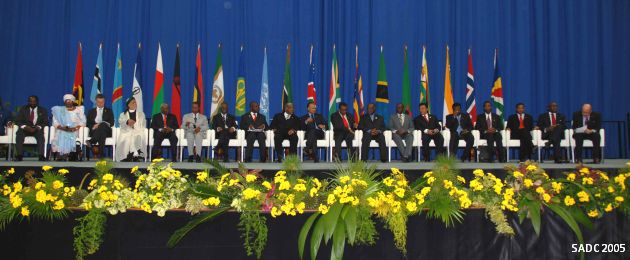
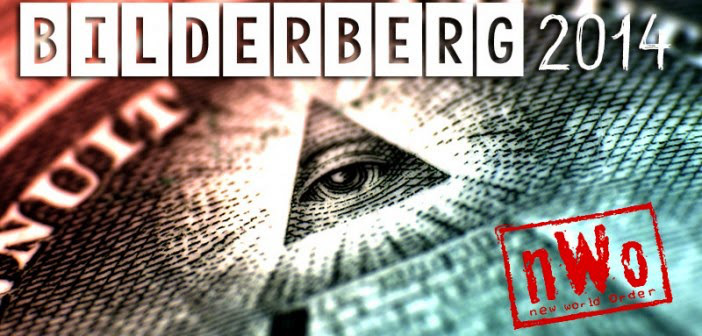
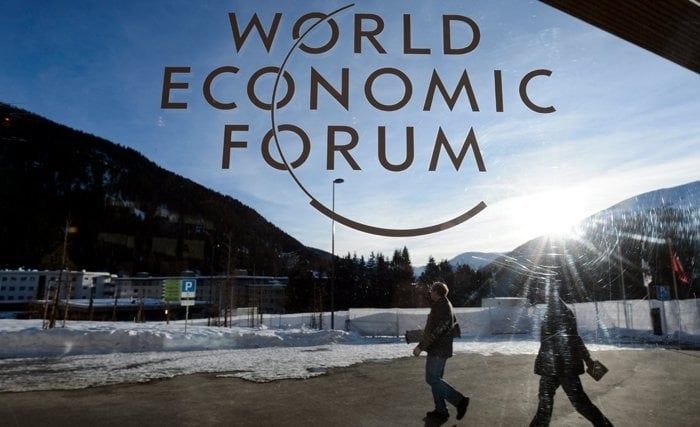
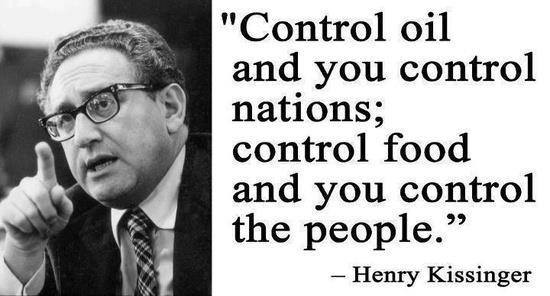 One of the permanent agenda items which is close to Rockefeller’s heart, the current thriving force behind the Bilderbergers, and is being propagated, by his disciple, Henry Kissinger, is the reduction of world population – so that the few on top may live better and longer with the world’s rapidly diminishing resources.
One of the permanent agenda items which is close to Rockefeller’s heart, the current thriving force behind the Bilderbergers, and is being propagated, by his disciple, Henry Kissinger, is the reduction of world population – so that the few on top may live better and longer with the world’s rapidly diminishing resources.
